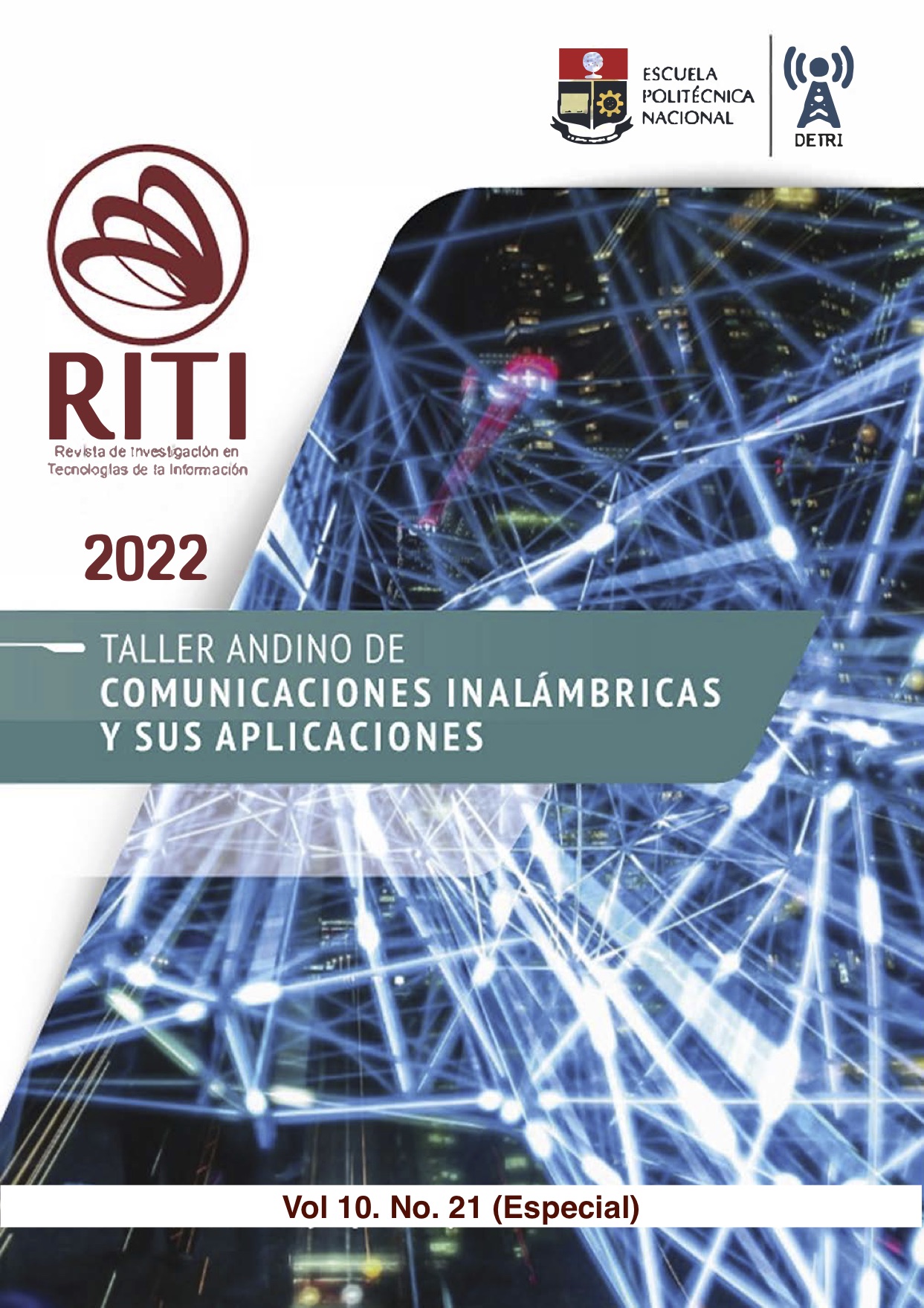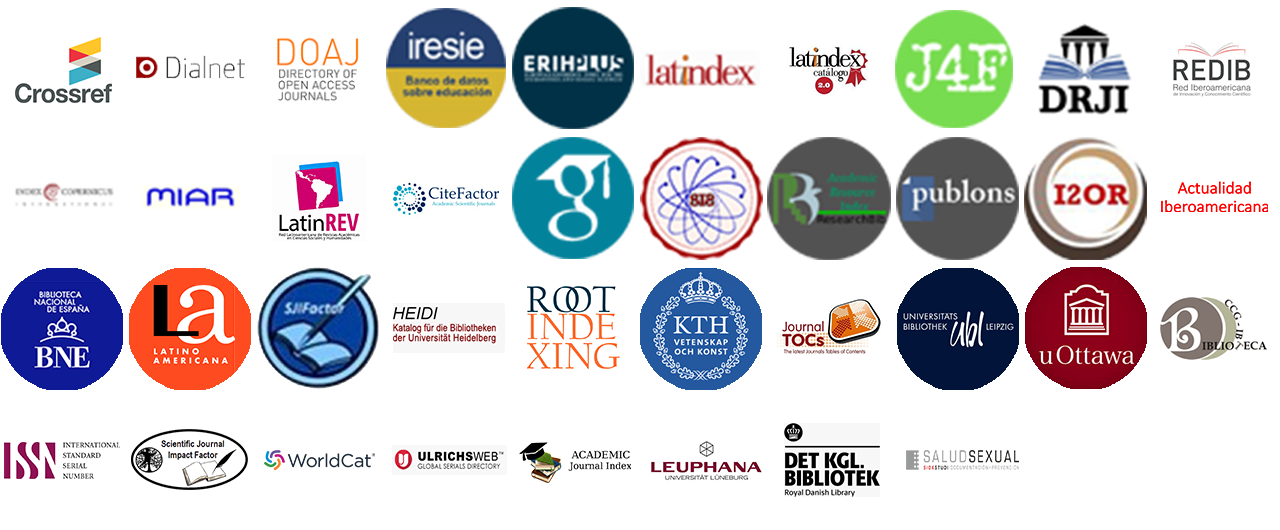Implementation of a mini-network of wireless sensors for early detection of forest fires
DOI:
https://doi.org/10.36825/RITI.10.21.008Keywords:
Raspberry Pi, Xbee, Fire Forest, Python, SensorsAbstract
This article presents the implementation of an early warning system in the event of a forest fire, avoiding the loss of extensive wooded areas, flora, fauna, and health conditions of inhabitants surrounding the affected areas. The mini network has at its core Raspberry Pi cards in the Zero and 2B+ versions for processing environment data and XBee S3B wireless communication modules for interconnection between the transmitter and coordinator nodes. This solution takes advantage of the high processing capacity of the Raspberry Pi platform and the low energy consumption of the sensors and wireless communication modules, resulting in an autonomous, portable, rapid deployment and low-cost system, additionally with the purpose of verifying and to visually discriminate the presence of an outbreak of fire, camera modules are inserted that allow images to be captured, which are stored on a web server hosted in the cloud. To analyze the performance and proper location of the nodes that make up the mini-network, in situ measurements are made to assess the maximum coverage area and packet loss during ZigBee wireless transmission, resulting in a reliable, autonomous alert system. and low cost.
References
Secretaría de Gestión de Riesgos. (2022). Incendios Forestales. http://www.gestionderiesgos.gob.ec/incendios-forestales/
Comisión Nacional Forestal. (2010). Incendios Forestales, Guía práctica para comunicadores. http://www.conafor.gob.mx:8080/documentos/docs/10/236Gu%C3%ADa%20pr%C3%A1ctica%20para%20comunicadores%20-%20Incendios%20Forestales.pdf
González Ulibarry, P. (2017). Impacto de los incendios forestales en suelo, agua, vegetación y fauna. Biblioteca Del Congreso Nacional De Chile, (SUP11507), 1-8. https://www.camara.cl/verDoc.aspx?prmTIPO=DOCUMENTOCOMUNICACIONCUENTA&prmID=39186
Herrera, C., Dien Tran, T., Egas, C., Pereira, V., Sá Silva, J. (2016), Reliability in Wireless Sensor Networks for Environment Monitoring, Revista Politécnica, 37 (1), 1-7. https://revistapolitecnica.epn.edu.ec/ojs2/index.php/revista_politecnica2/article/view/621
Yang, S. H. (2014). Wireless Sensor Networks Principles, Design and Applications. Springer.
Rani, S., Sai, V., Maheswar, R. (2022). IoT and WSN bases Smart Cities: A machine learning perspective. Springer.
Institute of Electrical and Electronics Engineers. (2007). Draft Amendment to IEEE Standard for Information Technology-Telecommunications and Information Exchange Between Systems-Part 15.4: Wireless Medium Access Control (MAC) and Physical Layer (PHY) Specifications for Low-Rate Wireless Personal Area Networks (LR-WPANS): Amendment to Add Alternate Phy (Amendment of IEEE Std 802.15.4.). https://ieeexplore.ieee.org/servlet/opac?punumber=4040997
Zigbee. (2021). Connectivity standards alliance. https://csa-iot.org/all-solutions/zigbee/
Raspberry Pi. (2021). Raspberry Pi Zero. https://www.raspberrypi.com/products/raspberry-pi-zero/
Raspberry Pi. (2021). Introducing the Raspberry Pi cameras. https://www.raspberrypi.com/documentation/accessories/camera.html
Hanwei Elecronics C.O. LTD. (2022). Technical Data MQ-2 Gas Sensor. https://www.mouser.com/datasheet/2/321/605-00008-MQ-2-Datasheet-370464.pdf
DIGI. (2022). Digi XBee-Pr 900HP. https://www.digi.com/pdf/ds_xbeepro900hp.pdf
Python. (2022). Base64- Base 16, Base32, Base 64, Base 85, Data Encodings. https://docs.python.org/es/3/library/base64.html
Tatayo Vinueza, E. (2017). Implementación de una mini-red de sensores inalámbricos para detección temprana de incendios forestales utilizando hardware y software open source [Tesis de Grado]. Escuela Politécnica Nacional, Ecuador. https://bibdigital.epn.edu.ec/handle/15000/19022
Amazon AWS. (2022). Amazon EC2. https://aws.amazon.com/es/ec2/
Amazon AWS. (2022). Direcciones IP elástica. https://docs.aws.amazon.com/es_es/AWSEC2/latest/UserGuide/elastic-ip-addresses-eip.html
Published
How to Cite
Issue
Section
License
Copyright (c) 2022 Revista de Investigación en Tecnologías de la Información

This work is licensed under a Creative Commons Attribution-NonCommercial-NoDerivatives 4.0 International License.
Esta revista proporciona un acceso abierto a su contenido, basado en el principio de que ofrecer al público un acceso libre a las investigaciones ayuda a un mayor intercambio global del conocimiento.
El texto publicado en la Revista de Investigación en Tecnologías de la Información (RITI) se distribuye bajo la licencia Creative Commons (CC BY-NC
 ), que permite a terceros utilizar lo publicado citando a los autores del trabajo y a RITI, pero sin hacer uso del material con propósitos comerciales.
), que permite a terceros utilizar lo publicado citando a los autores del trabajo y a RITI, pero sin hacer uso del material con propósitos comerciales.



